Post by Kilsi Naanee, undergraduate in interdisciplinary neuroscience at Portland State University and Biology teacher at Franklin High School in Portland Public Schools. Kilsi organized Noggin visits to Franklin this spring, and wrote about his experience.
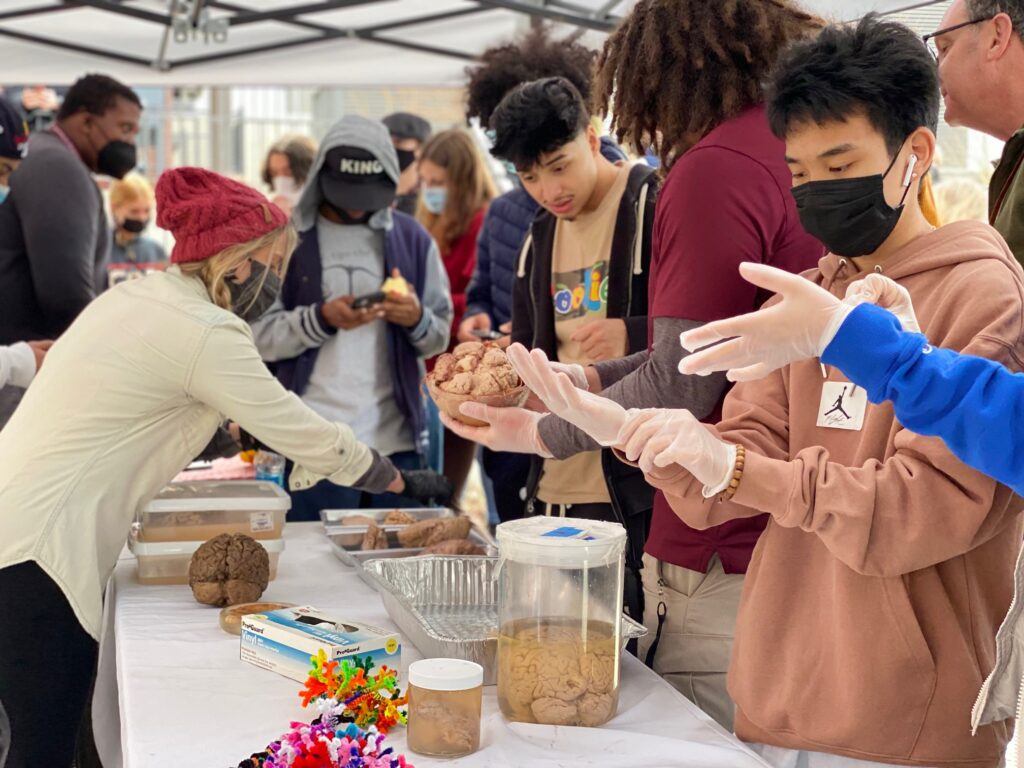
Planning for outreach
There are so many moving parts trying to plan for an event during a pandemic.
“In times of anxiety, people want to come together physically and draw strength from the presence of others, but the advice on how to contain this virus is that we should do the exact opposite.”
— Seyi Makinde
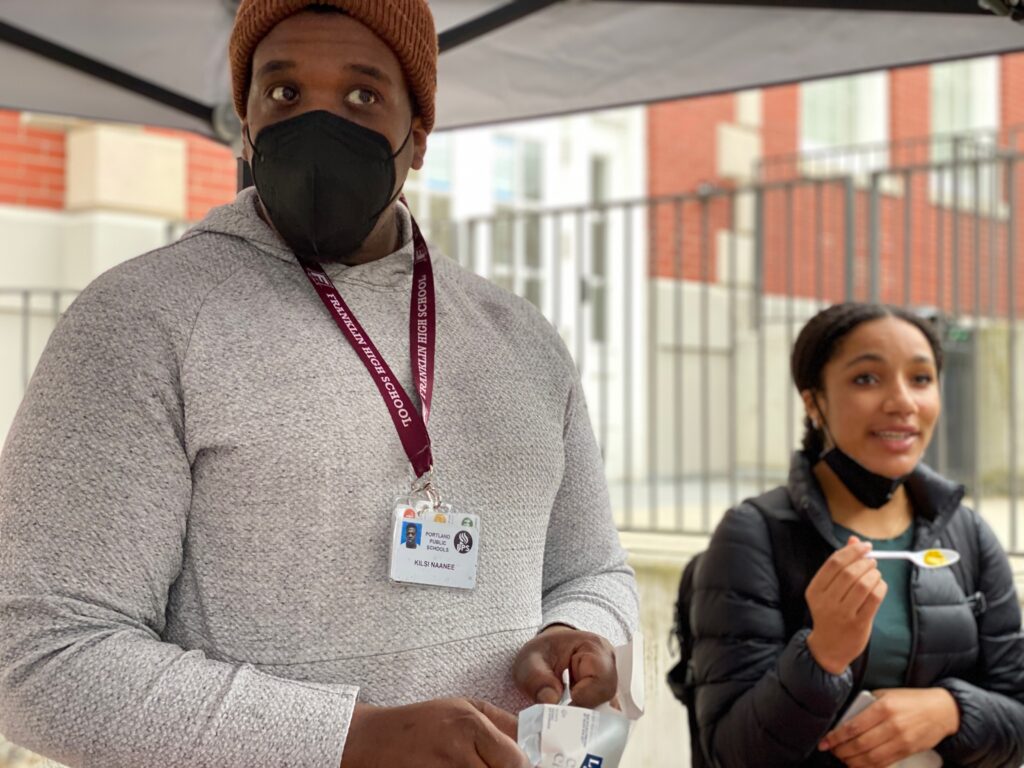
Are we even able to host visitors, and if we are, how many can we host? There are more moving parts given the potential waning of a pandemic. For example, what does a visiting group coming to class even look like after our school mask mandates start to lift?
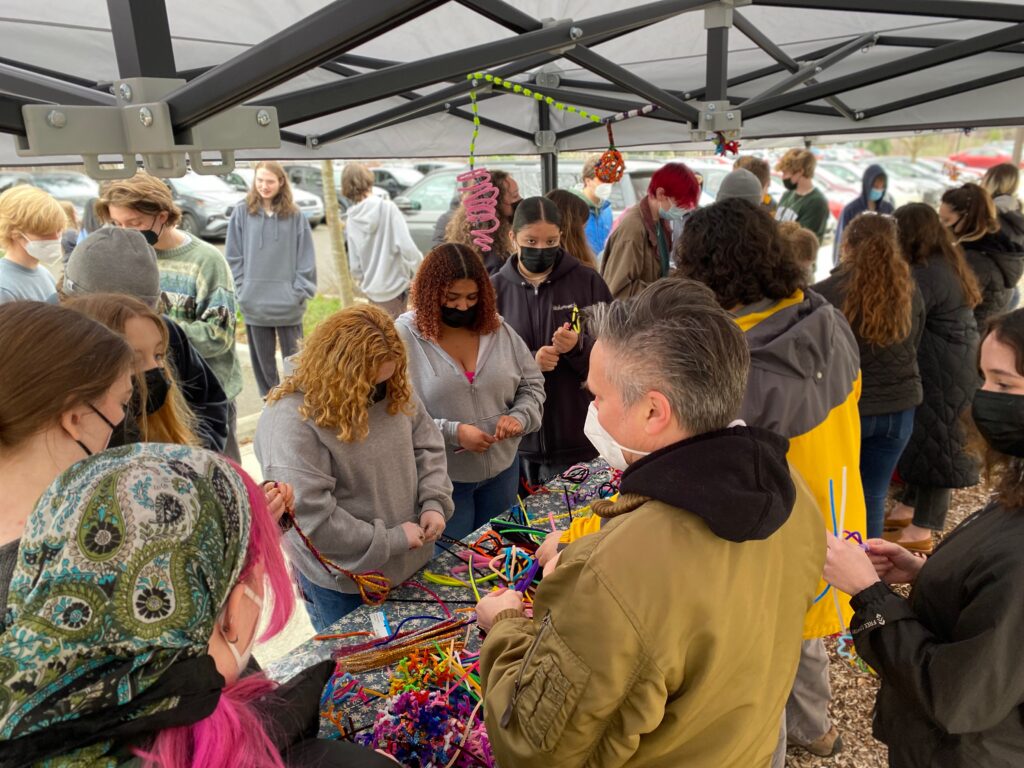
LEARN MORE: Portland Public Schools to become ‘mask-optional’ beginning March 14
Franklin is a unique community where students want to know a little more about the science of being fully unmasked before giving their own masks up. So even though our mask mandate was officially lifted, most students decided to wait until some time had passed to make a better-informed decision.
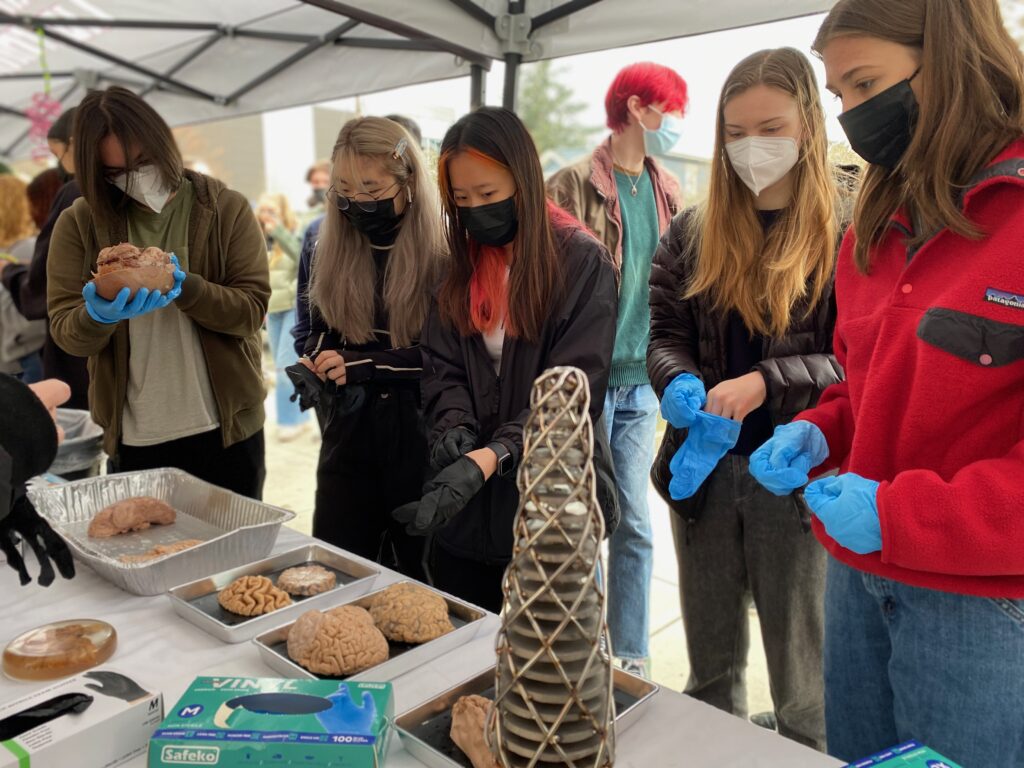
LEARN MORE: Mandatory masking in schools reduced COVID-19 cases
LEARN MORE: Mandatory masking in schools reduced COVID-19 cases during Delta surge
LEARN MORE: Humidity from masks may lessen severity of COVID-19
I wanted to communicate safety protocols in advance, often as they were changing. With students so passionate about science, I was fortunate to have Northwest Noggin join our Biology class. We hoped to share this opportunity with other students, so we invited additional Biology classes at Franklin, too. With such a big group, we wanted students to have a chance to interact with the volunteers and ask questions and get an opportunity to network with scientists from around the city. We wanted to create a safe and respectful environment. We held our visit outdoors where we could be a bit safer and still interact.
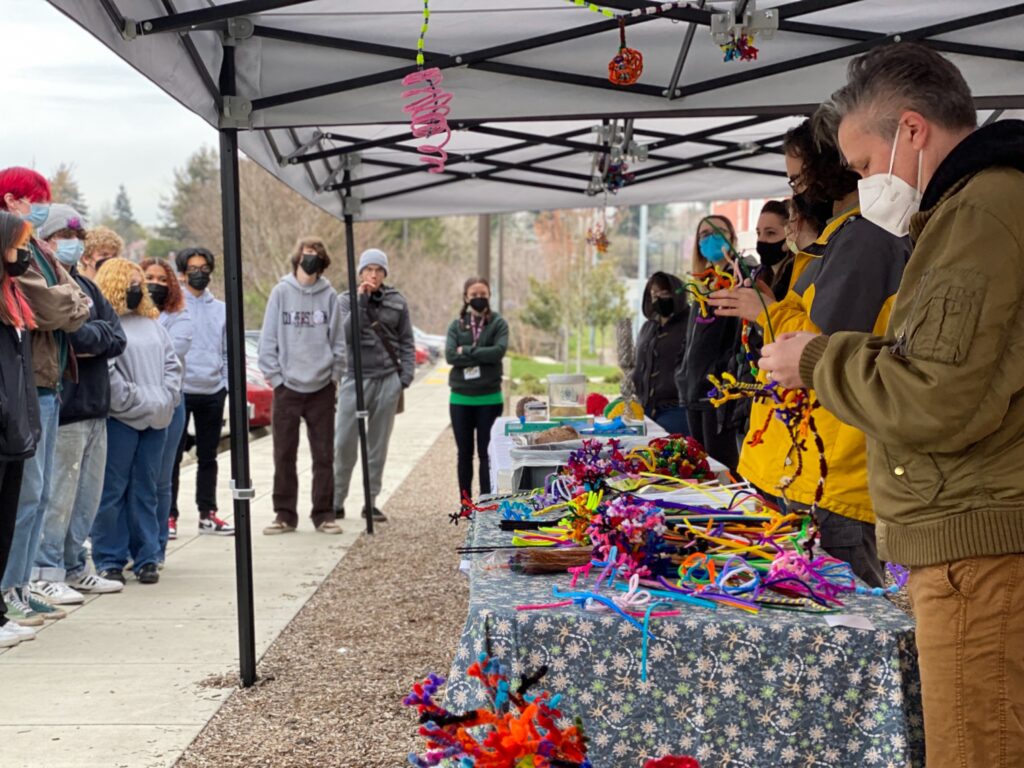
With that being said, there is an official district science curriculum that doesn’t cover what students are often truly curious about or motivated to learn. While I’m asked to teach this curriculum, I have so many students asking complex and interesting questions about biology that just aren’t there.
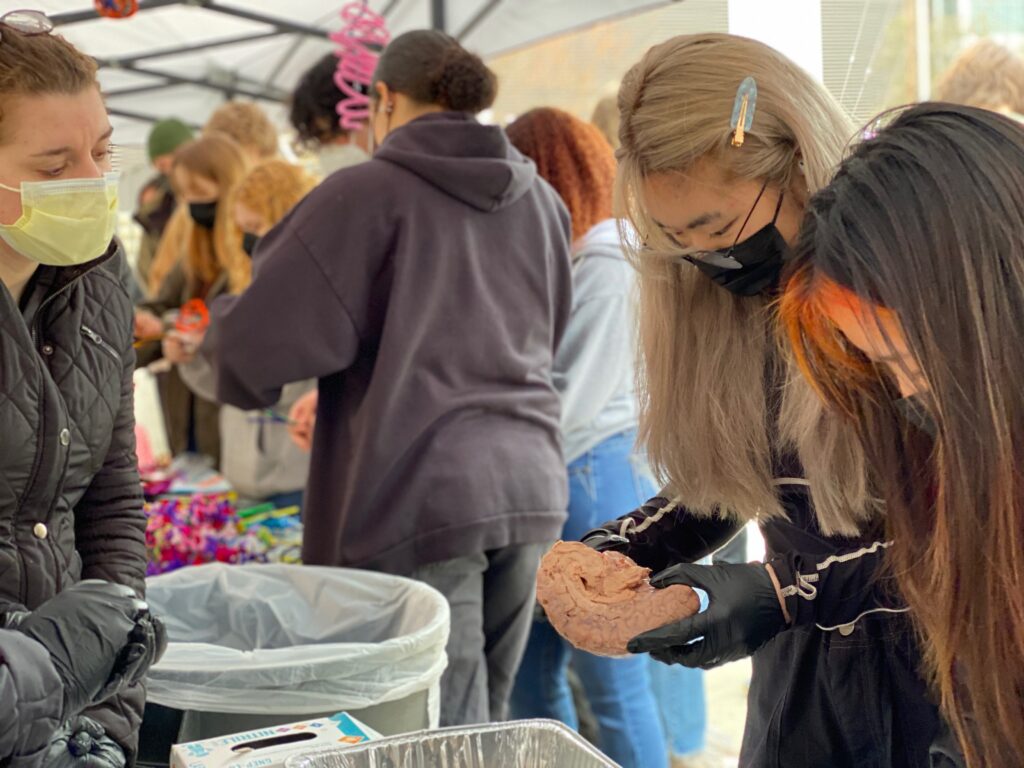
LEARN MORE: Putting brains back in biology
LEARN MORE: The Case for Neuroscience Research in the Classroom
LEARN MORE: PPS High School Science and Mathematics
My students were excited to touch brain specimens (and know what specimens smelled like!); they wanted to understand why the body feels so different when daylight savings happens, how meditation affects the brain’s synapses, and what neuroplasticity was and what it might mean for recovery from TBI or other brain injury. They also loved the idea of blending art and science. I know they hoped to escape the everyday textbook and test preparation interactions we’re often required to have in biology class.
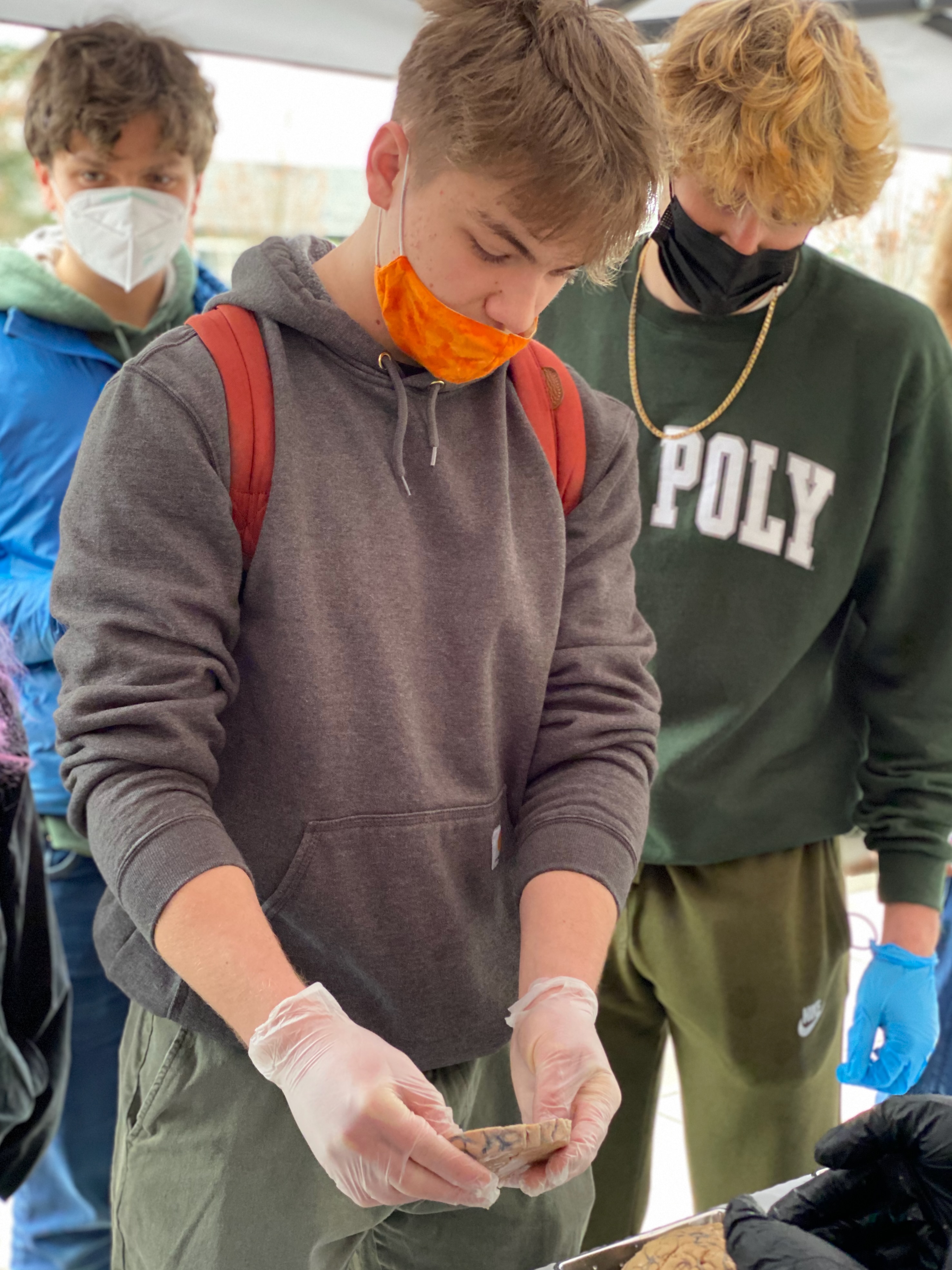
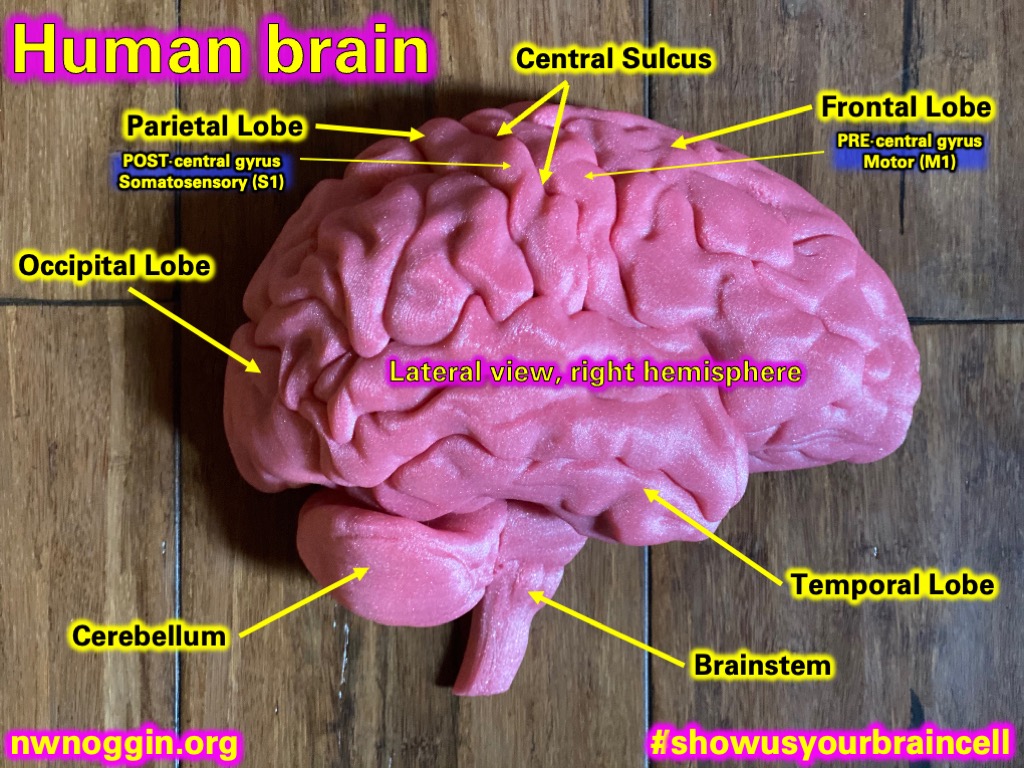
LEARN MORE: Dana Foundation Key Brain Terms Glossary
LEARN MORE: How to 3D print a human brain!
Miracle Berries!
Planning an activity for 17-year-olds to be engaged for 90 mins outdoors was challenging, but we decided to have a station set up doing the miracle berry test.
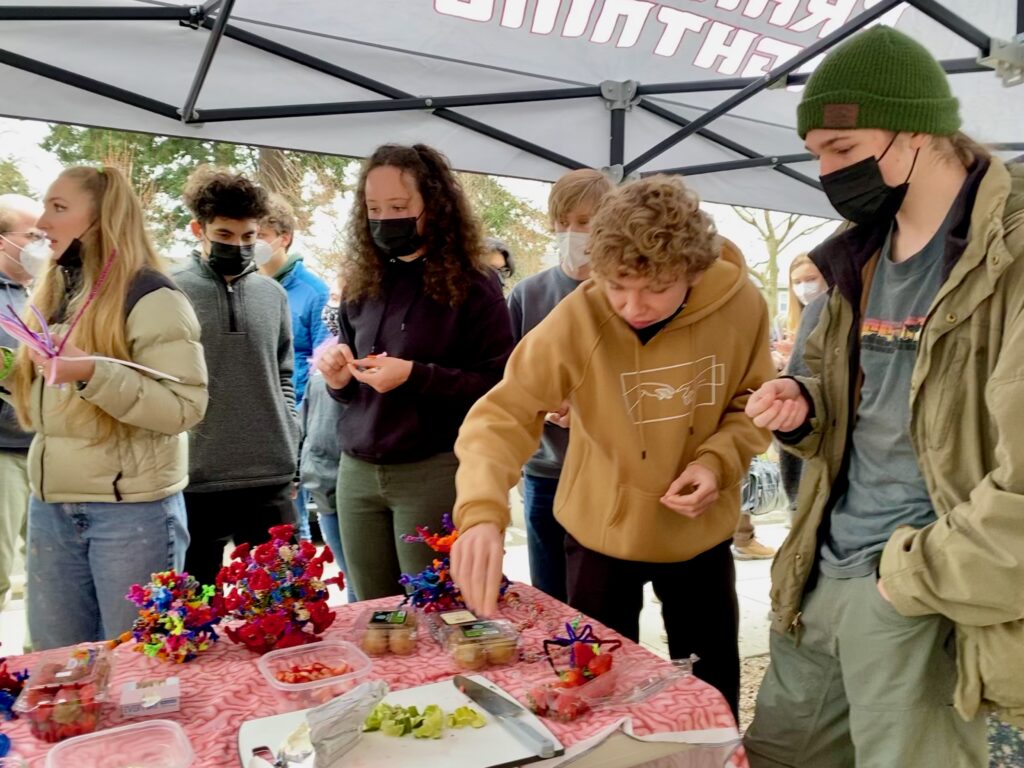
Miracle berries make sour foods taste sweet.
Just one berry will give you the effect for about 30 minutes to an hour and allow you to experience food in a completely new way! We decided to try various miracle berries to see which form has the most significant effects on changing our perception of our taste receptors.
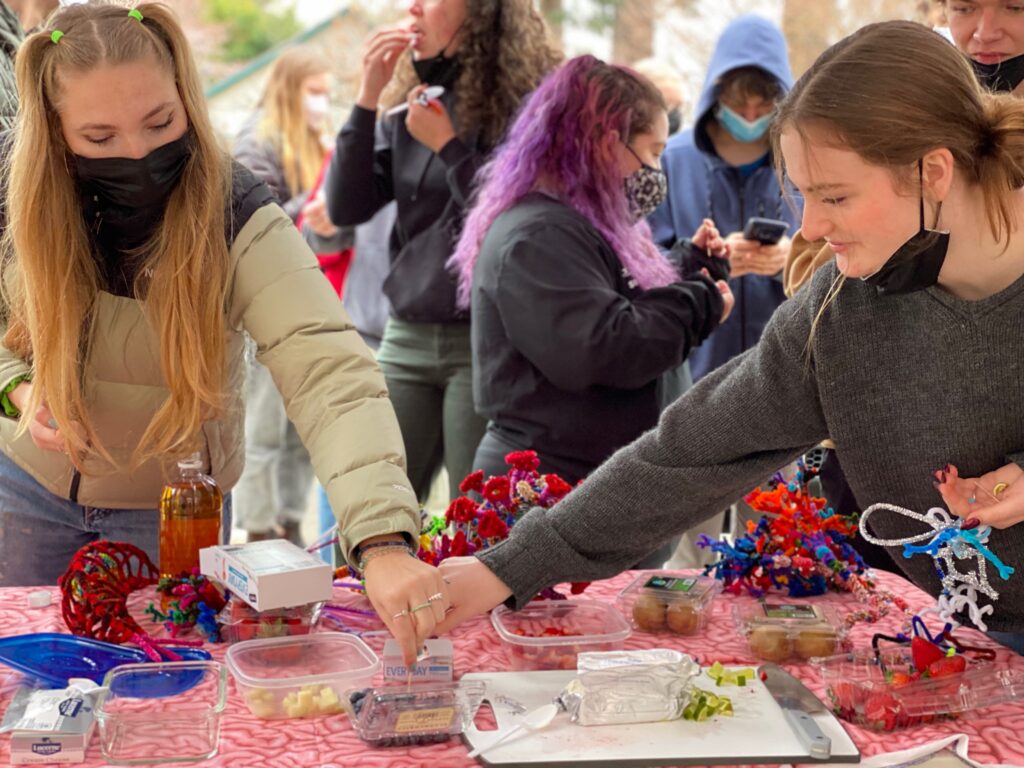
You dissolve a miracle berry tablet on your tongue – and under your tongue and up on the soft palate on the roof of your mouth where more taste buds are found – to let a chemical called MIRACULIN bind to your sweet taste receptor proteins.
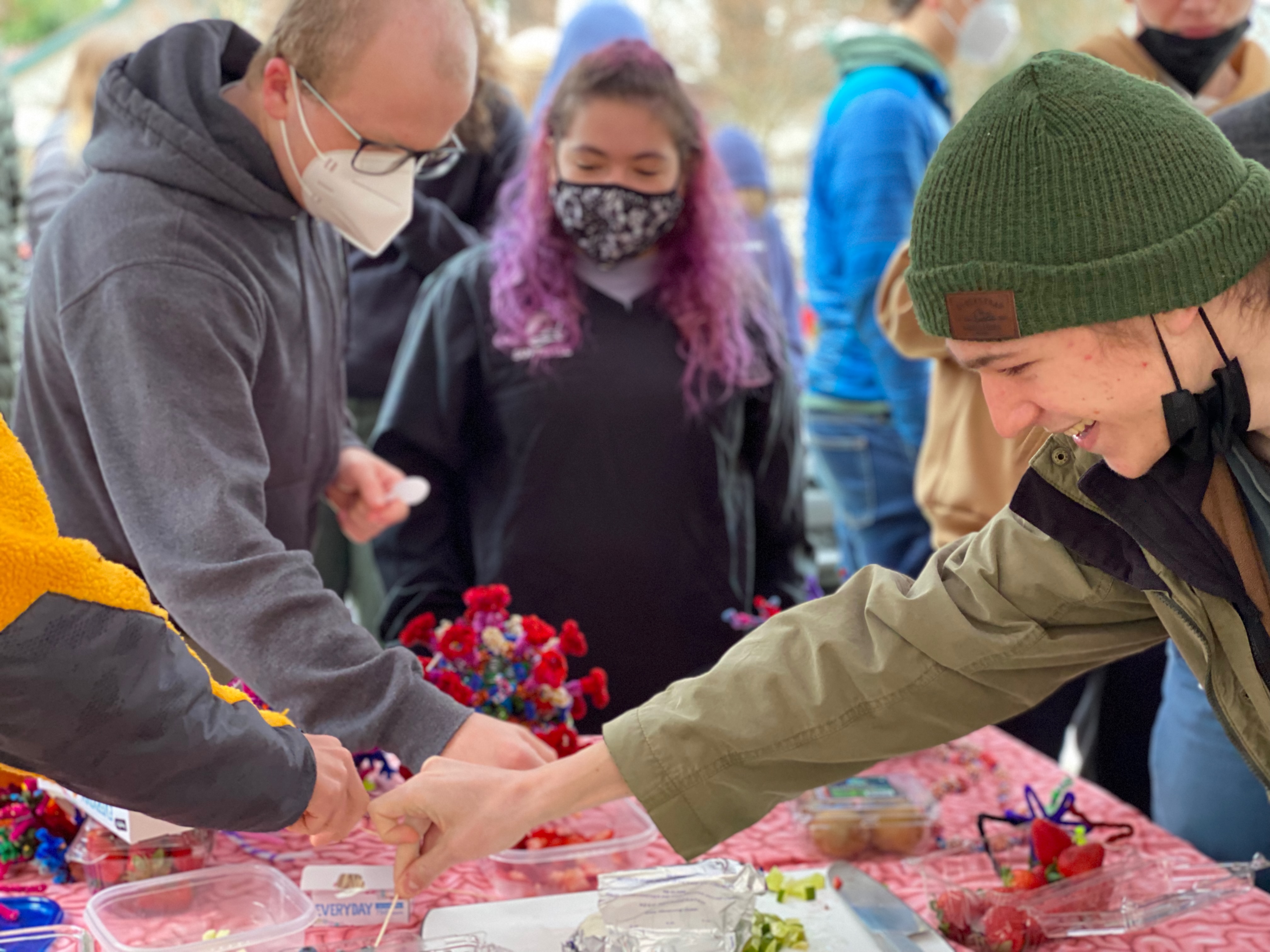
This changes receptor shape and responsiveness – and changes how you detect tastant chemicals in food. In non-acidic mouth environments, it shuts down those sweet taste receptors, so everything tastes quite bland. However, when the pH drops, as with citrusy foods like lemons, it activates pretty much all those sweet taste receptors at once! This changes your PERCEPTION of taste – dramatically! (And temporarily – it wears off).
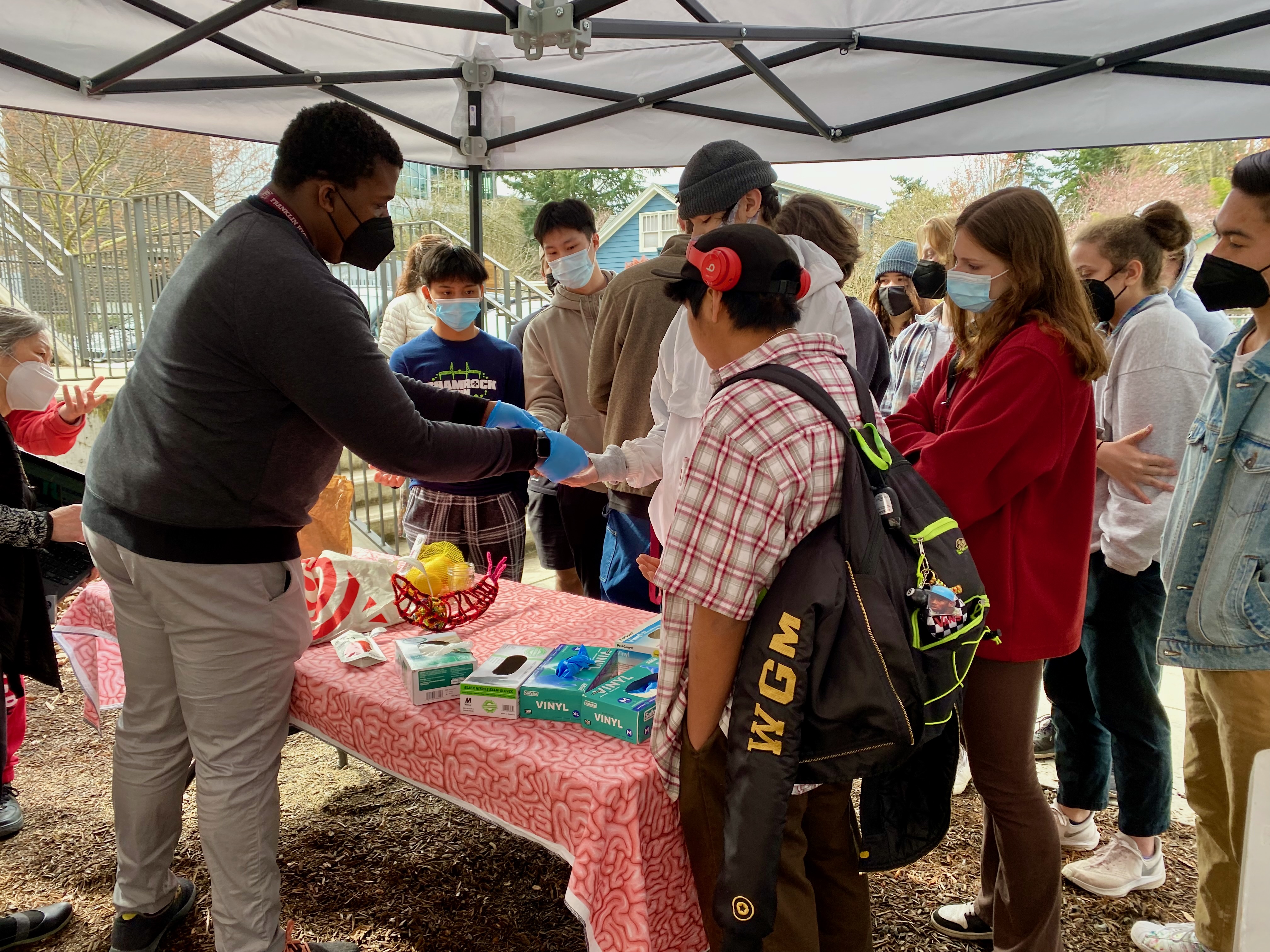
LEARN MORE: Molecular mechanisms of the action of miraculin, a taste-modifying protein
Miracle Berries change the flavors of everyday foods.
- Lemon – tastes very sweet, almost like lemonade.
- Lime – really really sweet – like drinking lime cordial.
- Orange – too sweet – also depends on the variety of orange, clementines are much sweeter but tangerines taste just a little sweeter, ruby red oranges are delicious.
- Vinegar – tastes Like treacle.
- Anything Pickled like gherkins, pickled onions taste like candy.
- Grapefruit – very sweet you can’t stop eating them!
- Granny Smith’s Apple or cooking apple – tastes much sweeter.
- Strawberry – the hint of bitterness they usually have is gone and they taste like sugar coated strawberry.
- Cream Cheese – tastes like cheesecake.
- Kiwi Fruit – the tang has gone and it tastes sweeter and more delicious.
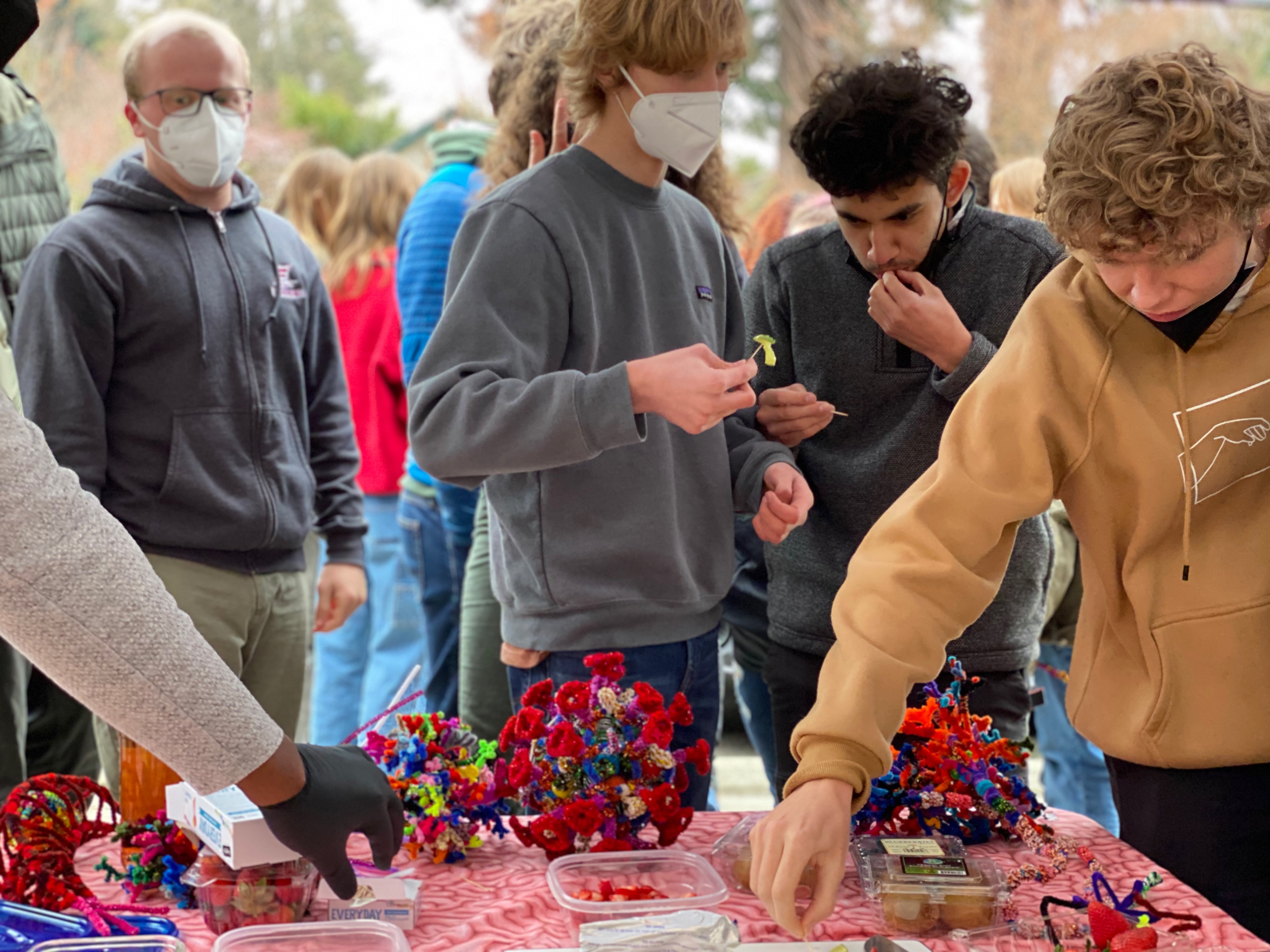
Examining Brains
The activity that many students were looking forward to was getting their hands on brains.
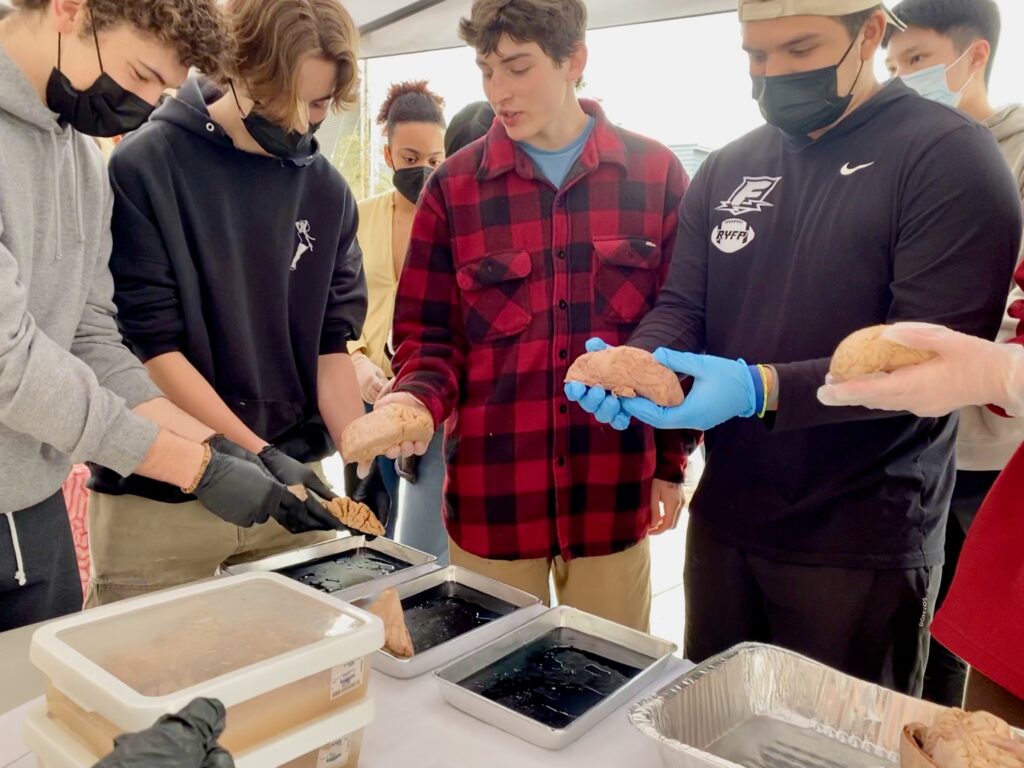
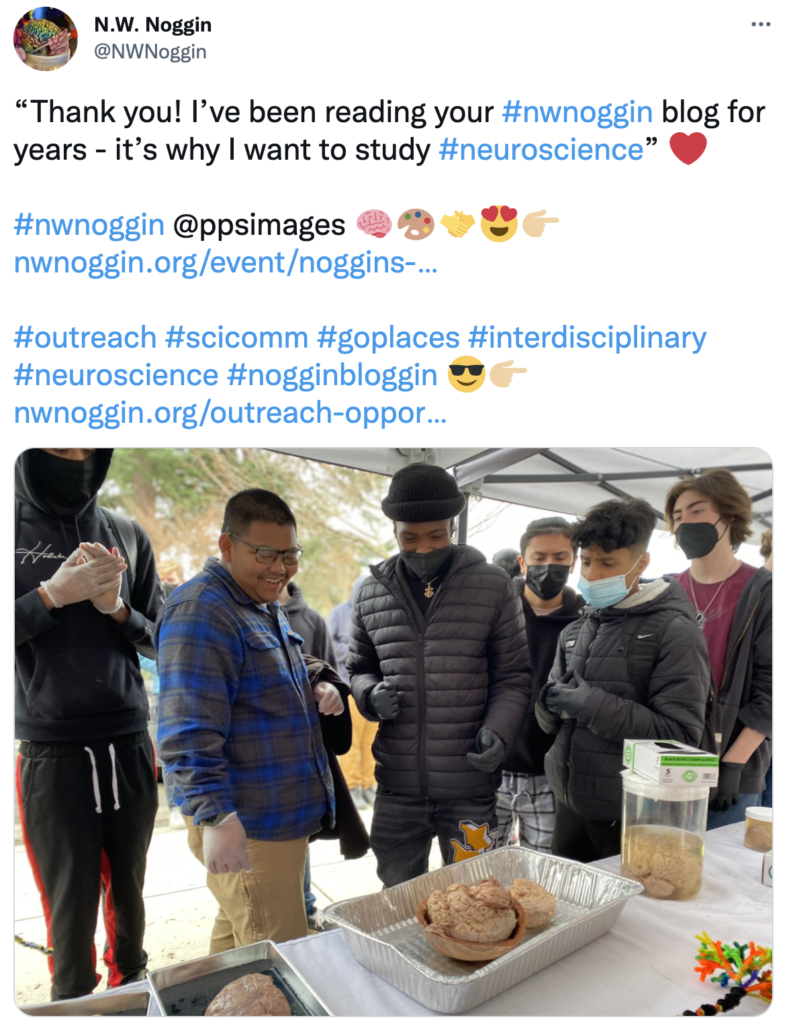
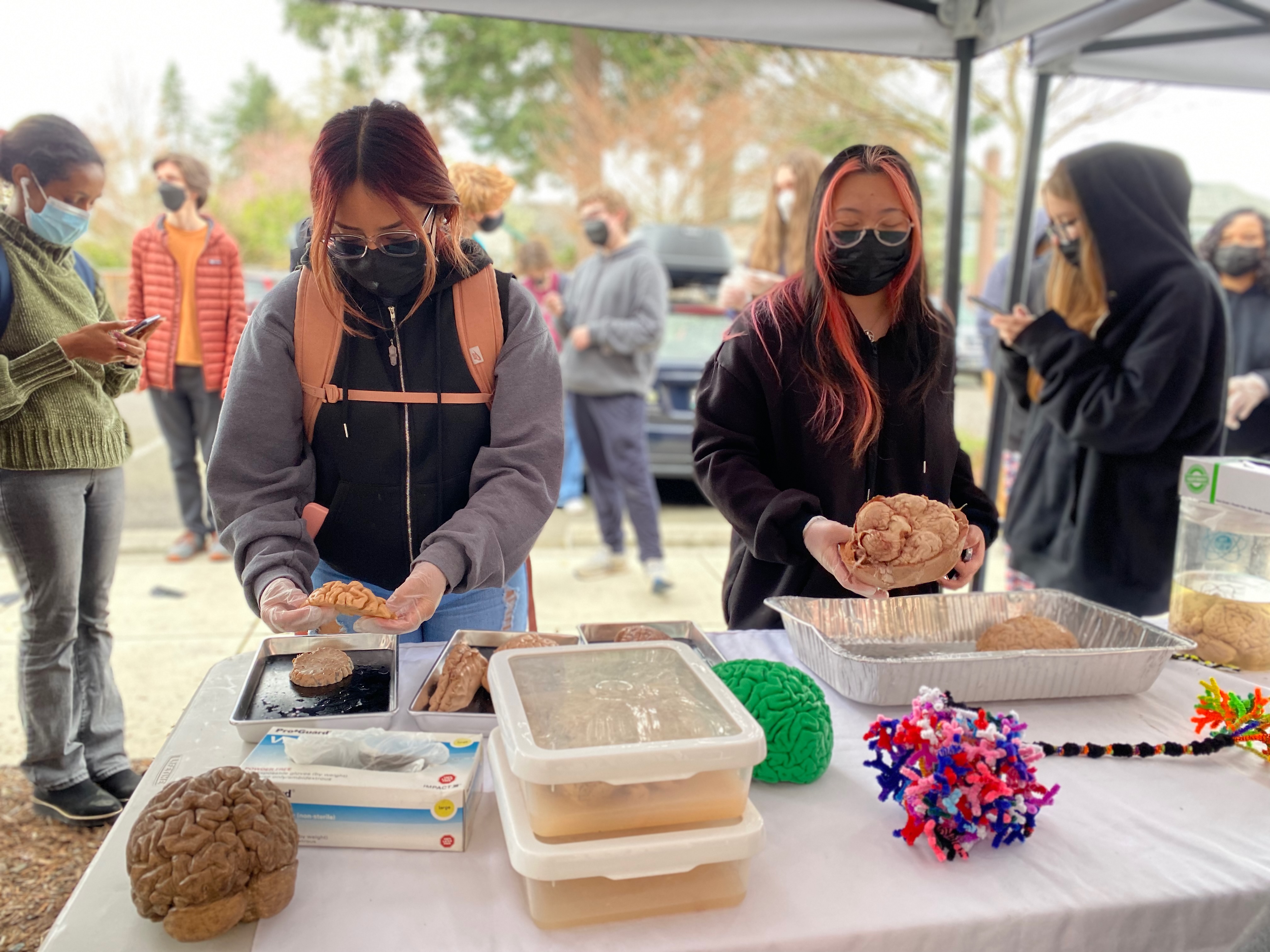
Junior level Biology doesn’t include dissection in the district curriculum, so the students were itching for a chance to interact with natural life specimens and enjoyed putting down their Chromebooks for face-to-face (and face-to-brain) interactions.
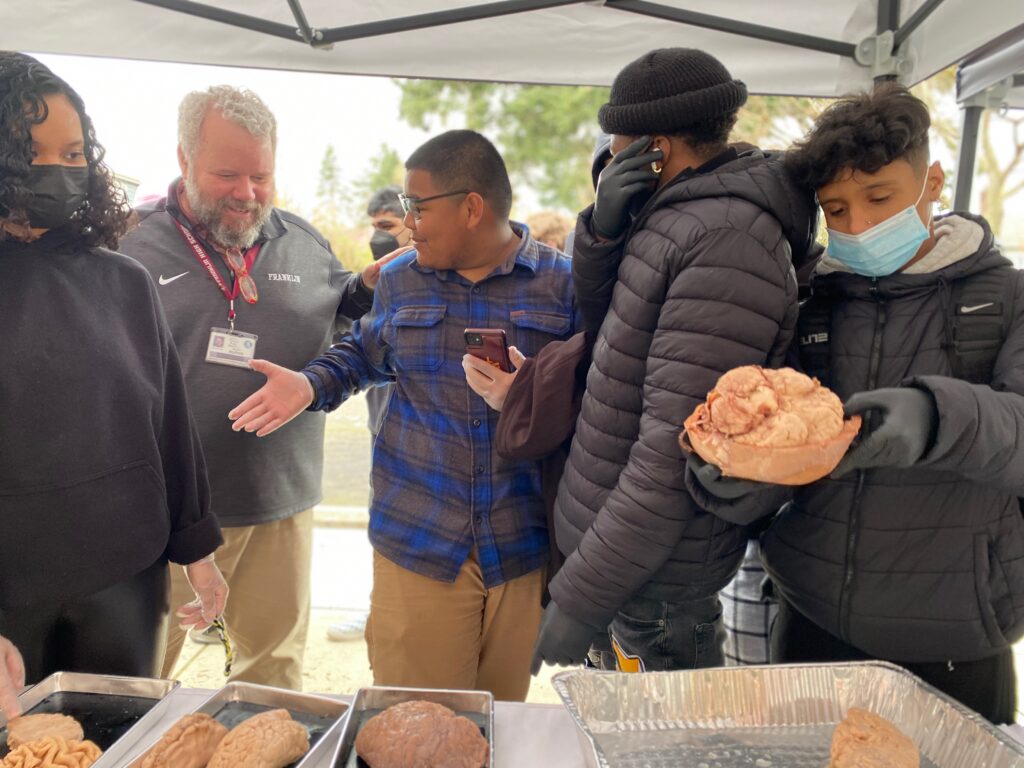
Making Art
Students were also fascinated with how art can enhance your understanding of science.
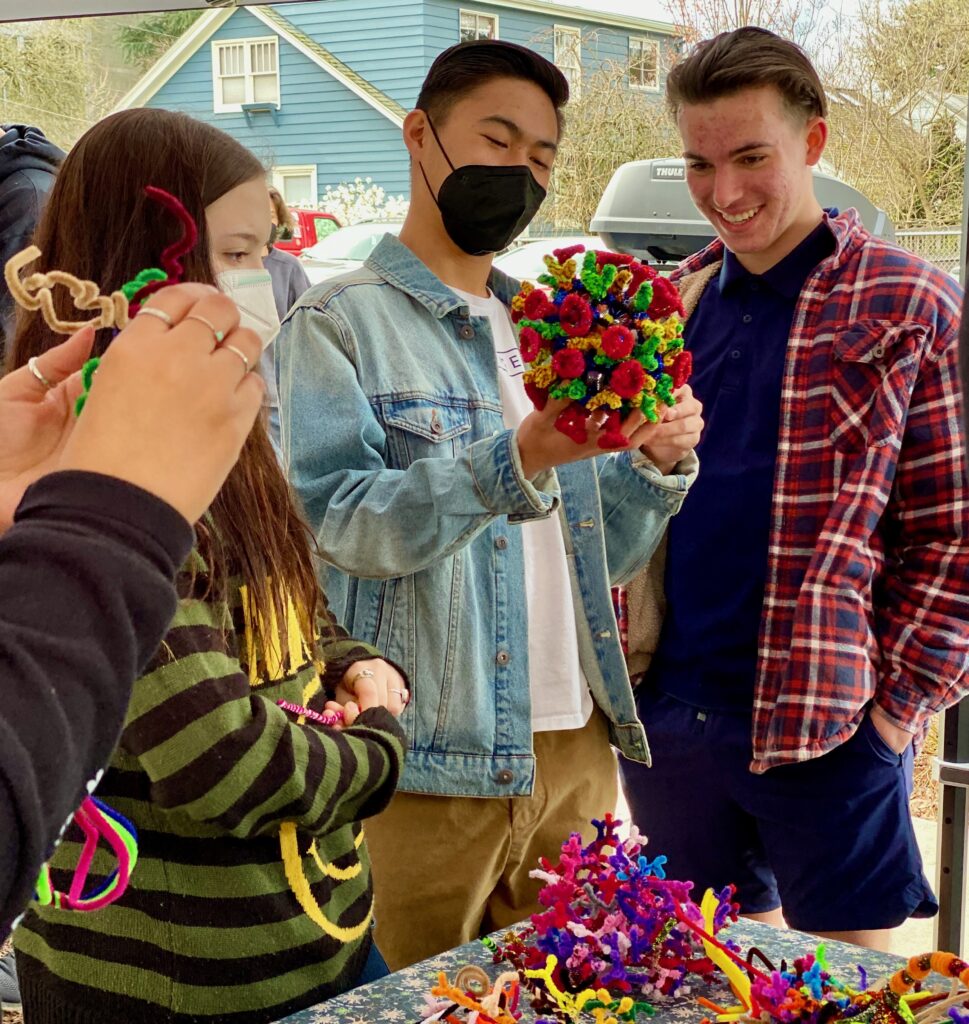
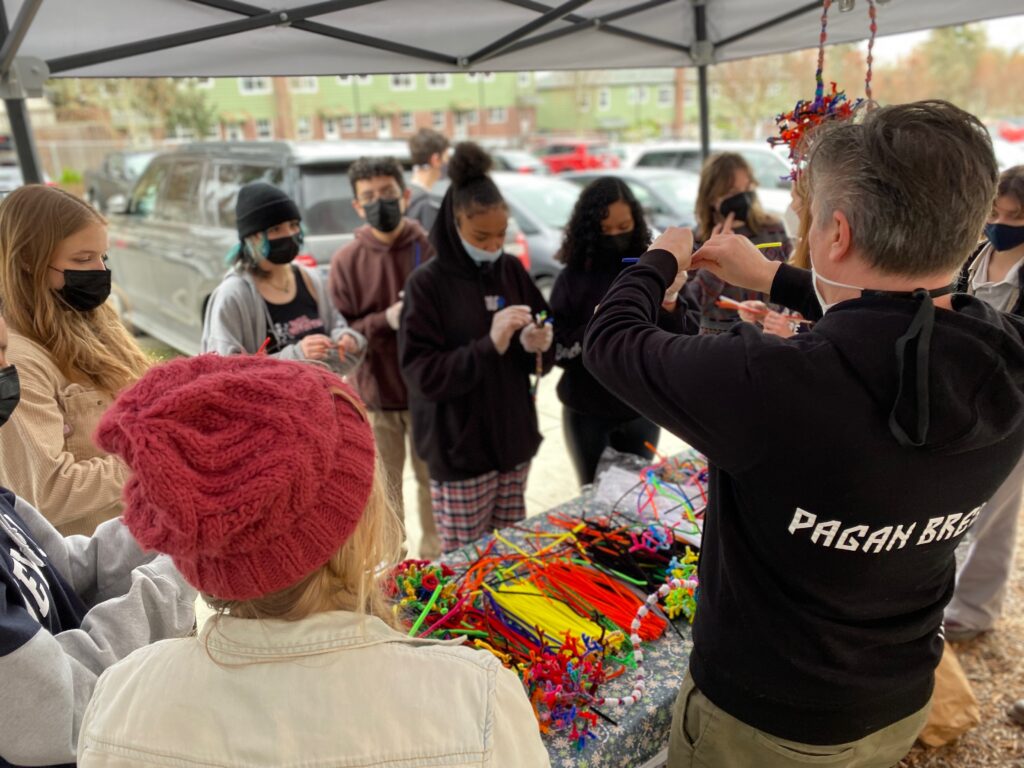
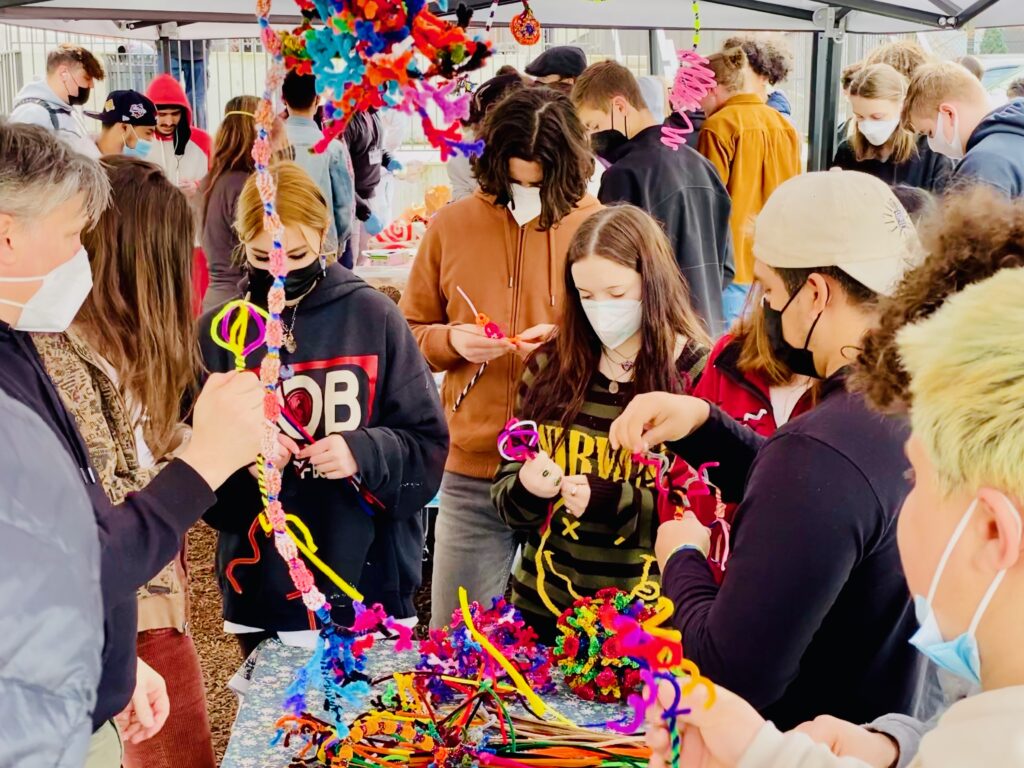
Post Visit Thoughts
“Mr. Naanee you should do this every year for your classes.”
— Molly Givler (Junior)
Northwest Noggin came to Franklin – and the specimens they brought, the brain cells we made, and the volunteer knowledge they offered blew away my class with what they were able to discover and interact with. It was what they wanted and even exceeded most of their expectations.
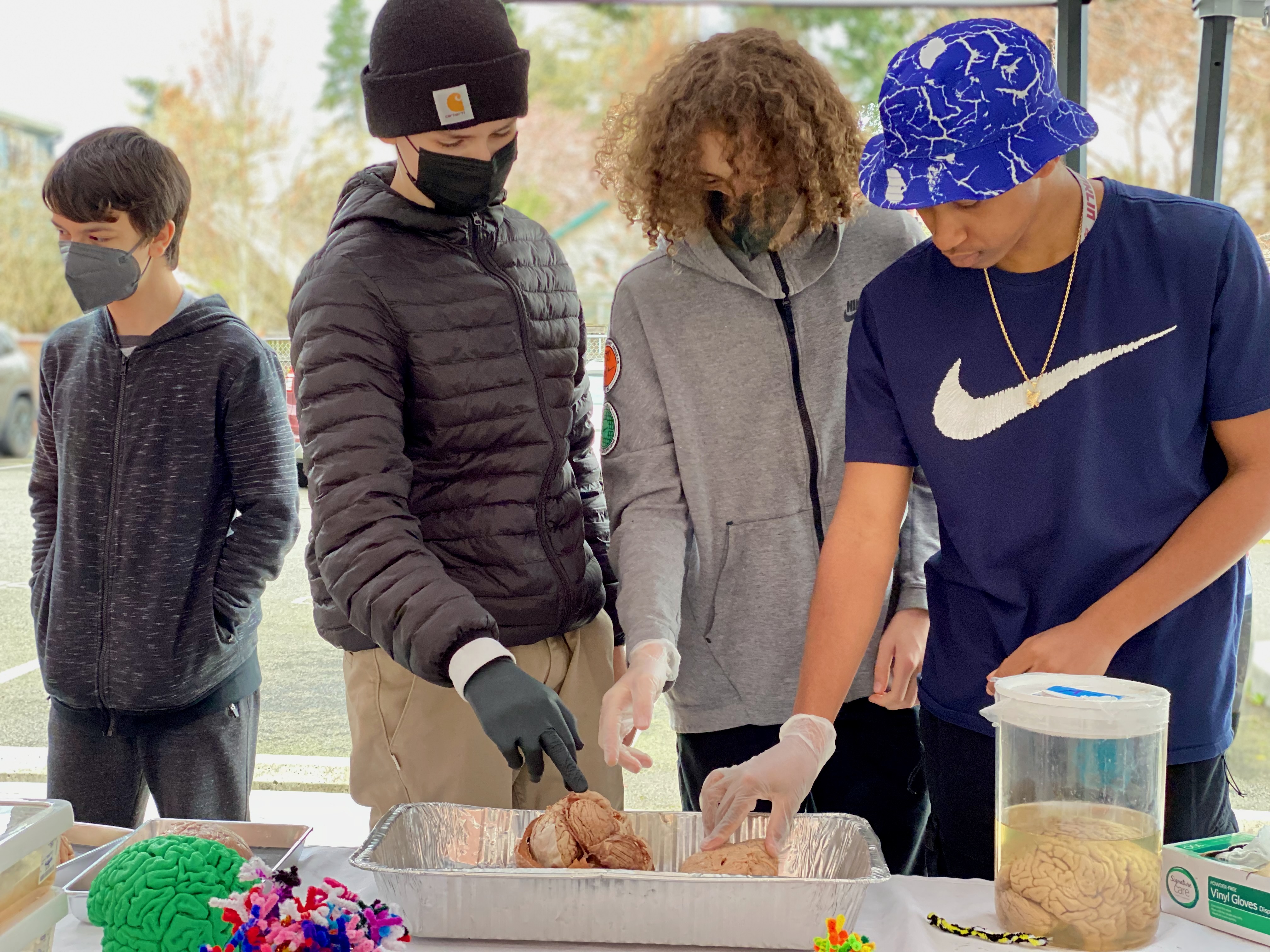
Seventeen and eighteen year olds are traditionally hard to please, yet our students continued to talk about this experience for weeks after the event, asking when the Northwest Noggin crew was returning!
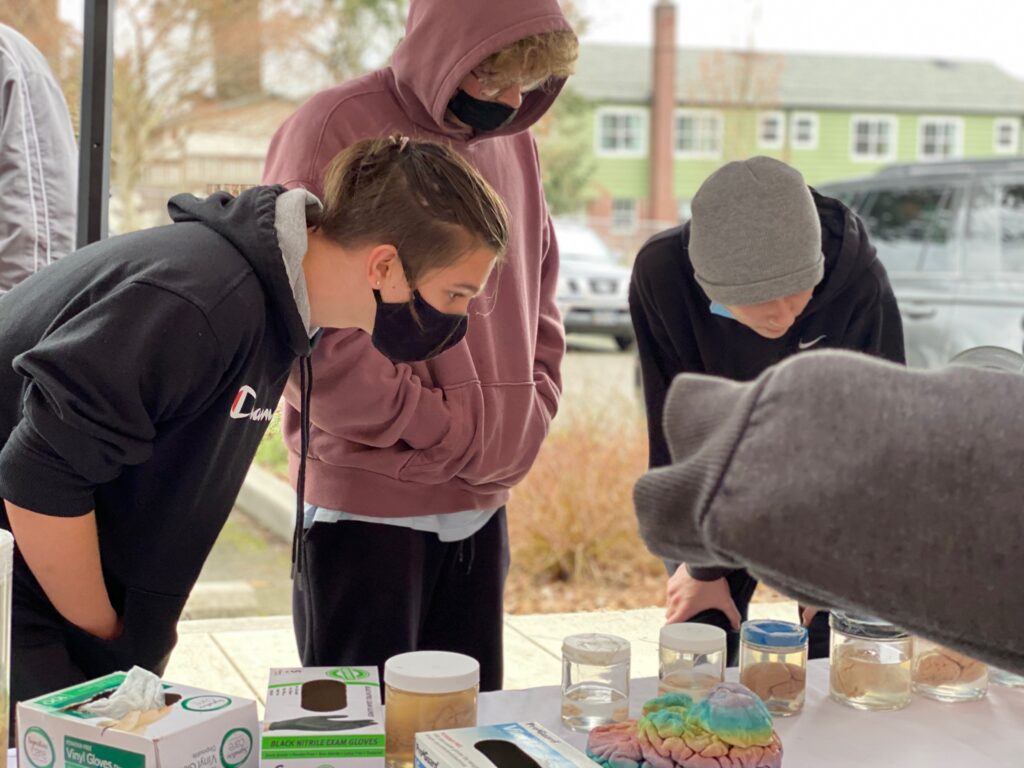
Students said that we should do this every year. They also noted that this should be part of the curriculum. Students were also able to use specimens to recall what they learned in their medical terminology class. This really was a once-in-a-lifetime experience.
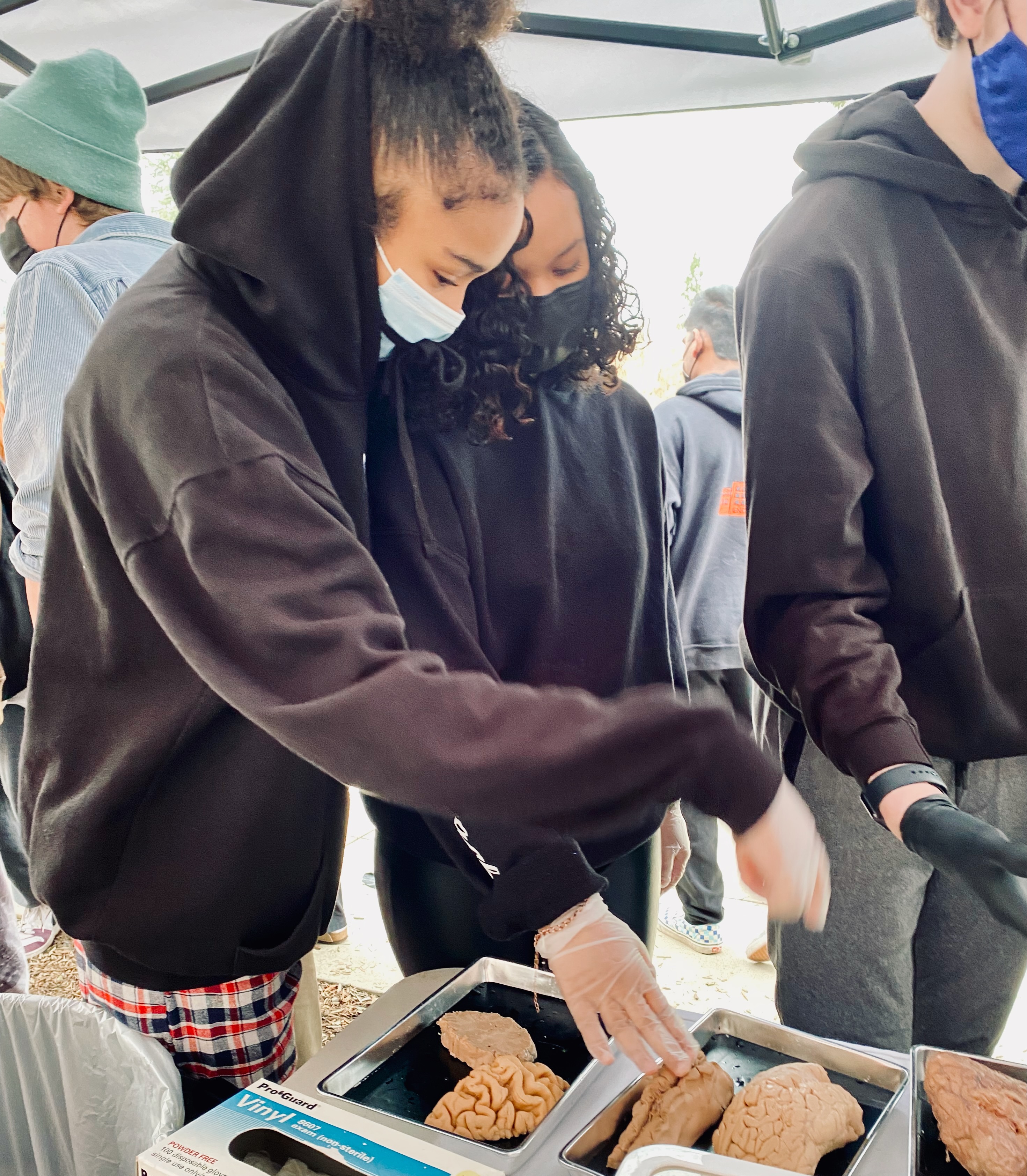
LEARN MORE: IS HANDS-ON LEARNING BETTER?
“The fastest way to grow social inequality is to refuse giving to others what education has given to you.”
— Dr Oby Ezekwezili
I wasn’t personally going to touch the brain, but now I can say I handled a human brain. Even Franklin security guards enjoyed the chance to feel the specimens and said if they had done this in high school, it could’ve changed their thinking about science. “It’s not the typical science that didn’t apply to me.”
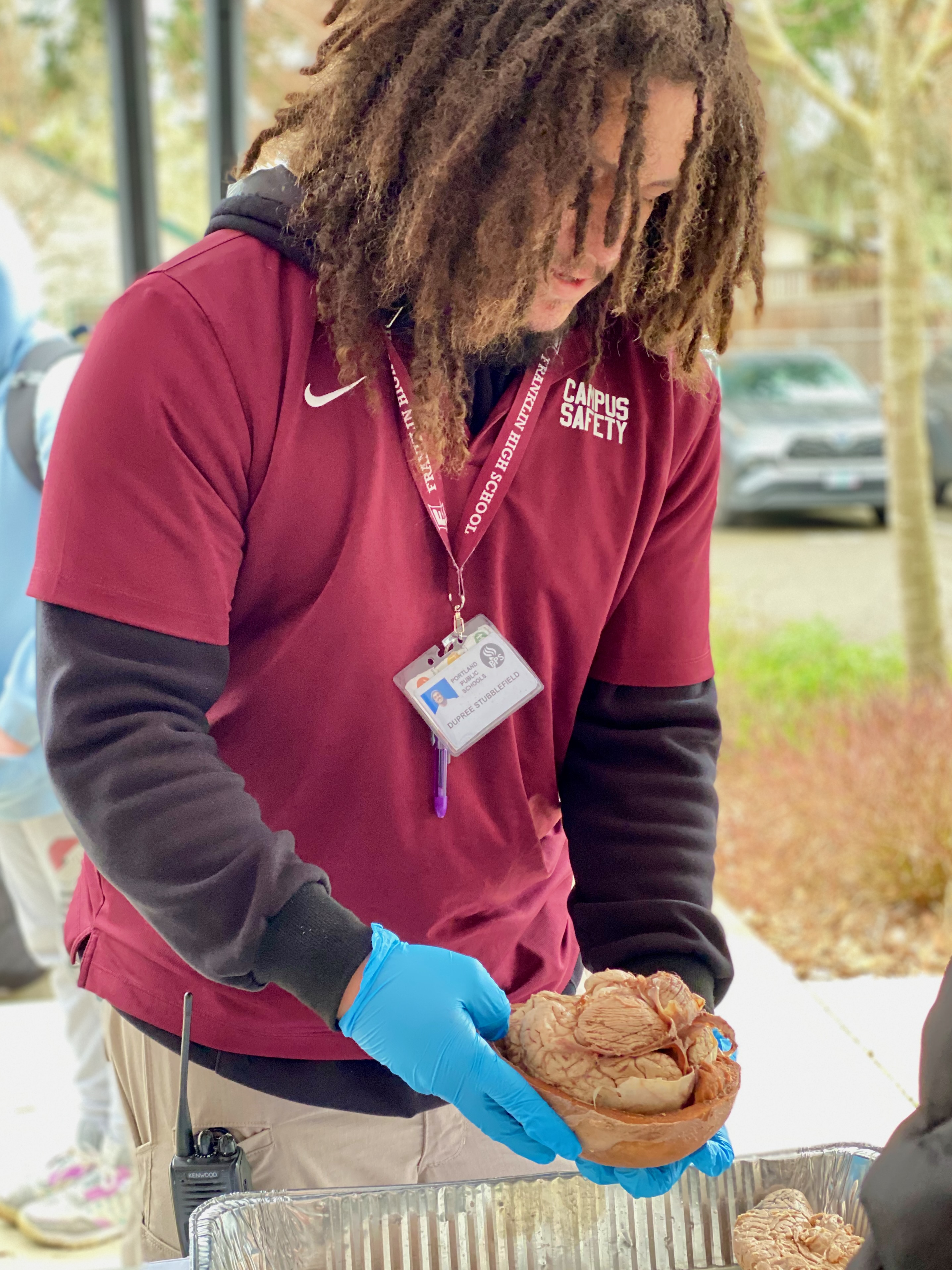
“My class will not stop talking about NW Noggin’s visit.”
— Dr. Shanzi Moyers (AP Science)
They were also amazed by how a naturally occurring berry can alter their perception.
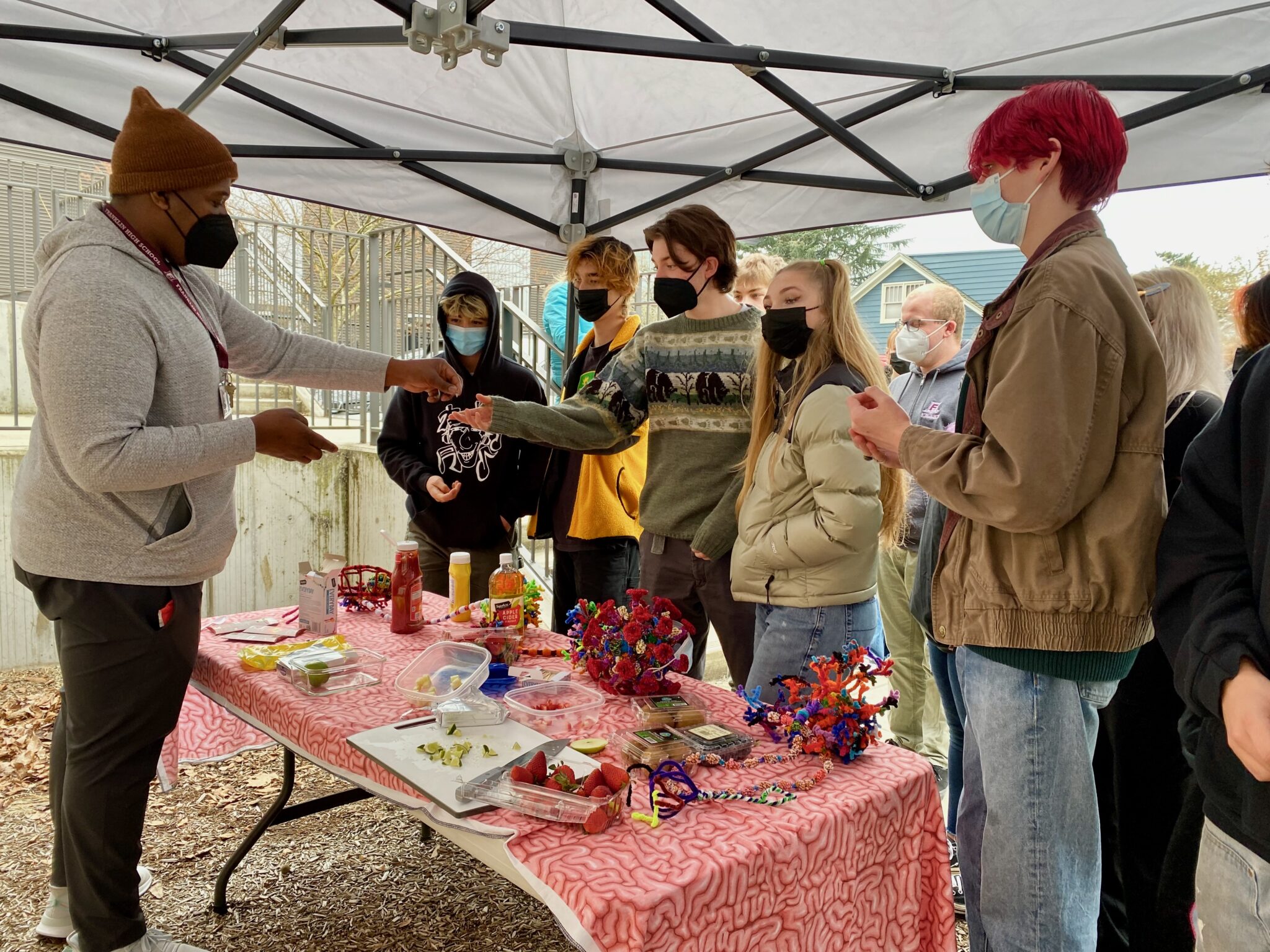
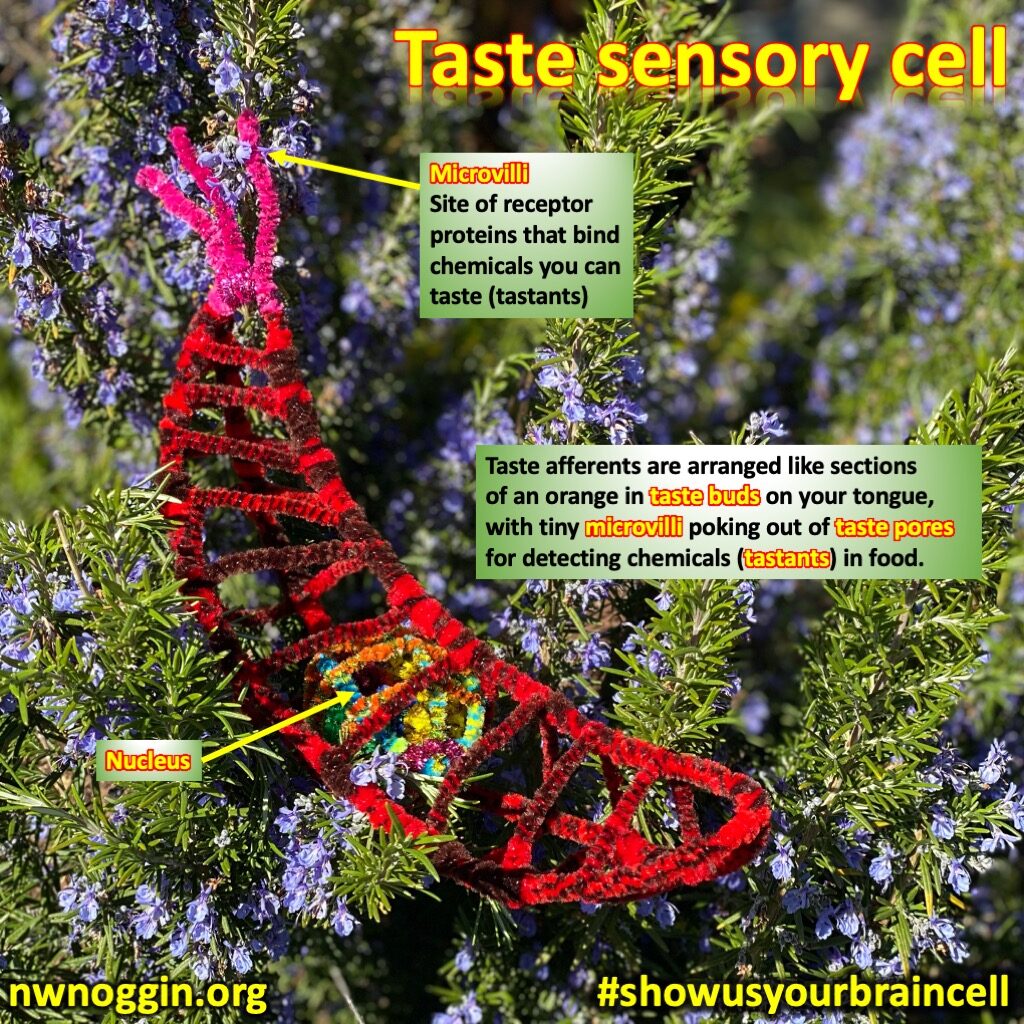
“It’s so interesting that it works. It makes so much more sense when you have the pipe cleaner of the receptor in front of you to visualize what is happening. I’m usually not into art, but it helped so much”
— Raul Ponce (junior)
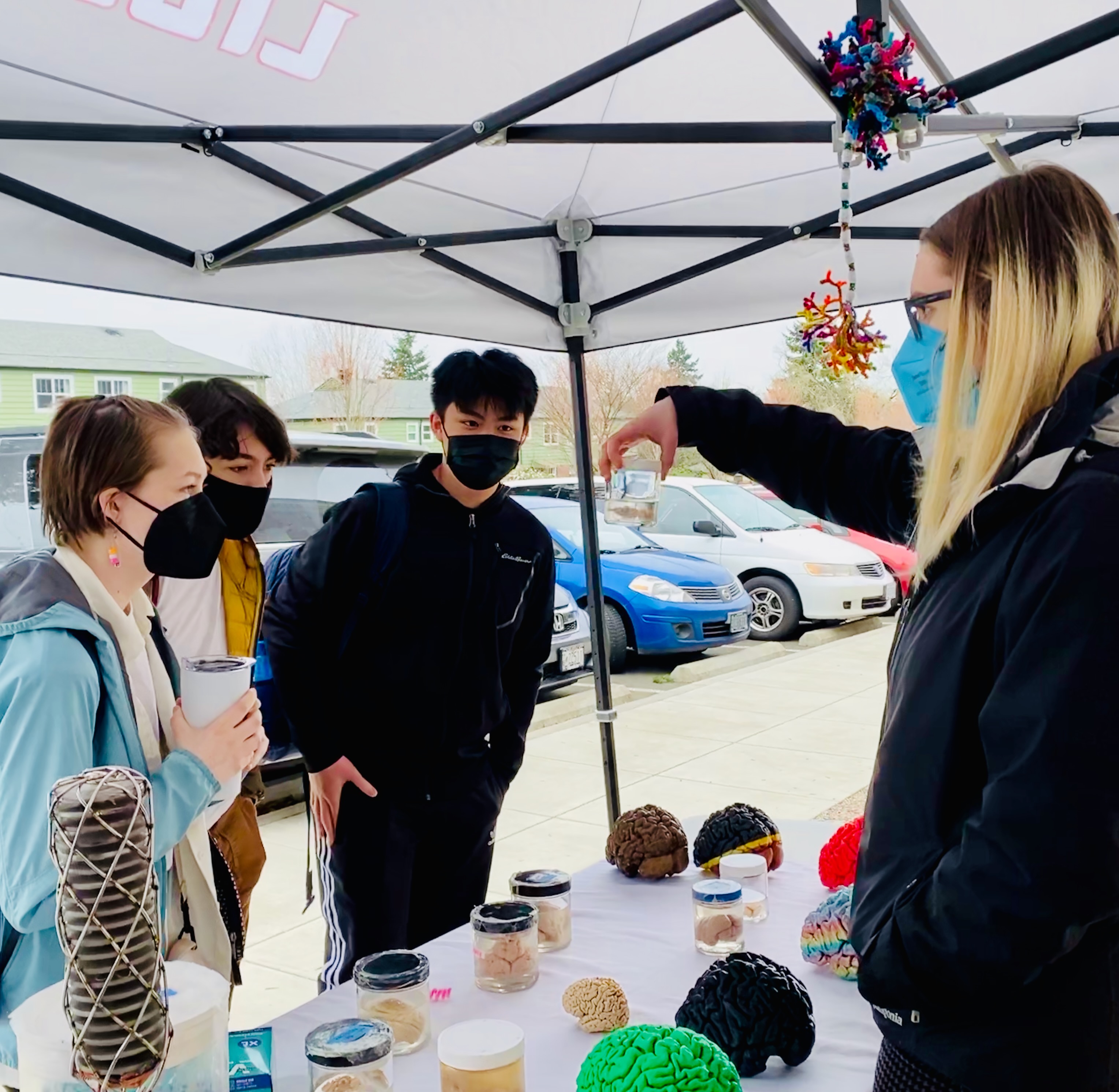
Science is difficult to grasp sometimes, and the videos we watch in class don’t always help us visualize ideas. Art and science made it more accessible and realistic; neurons aren’t flat but bend and protrude.

MAKE YOUR OWN BRAIN CELL: NW Noggin Art Resources
Using pipe cleaners to make neurons is a game-changer, and being a new teacher, I’m going to find ways to integrate art and science into how I teach concepts in biology. I feel I get stuck in the cycle of following along with the curriculum, which doesn’t blend science and art. I now want to continue finding ways to incorporate them both.
“Science and art have in common intense seeing, the wide-eyed observing that generates empirical information.”
— Edward Tufte
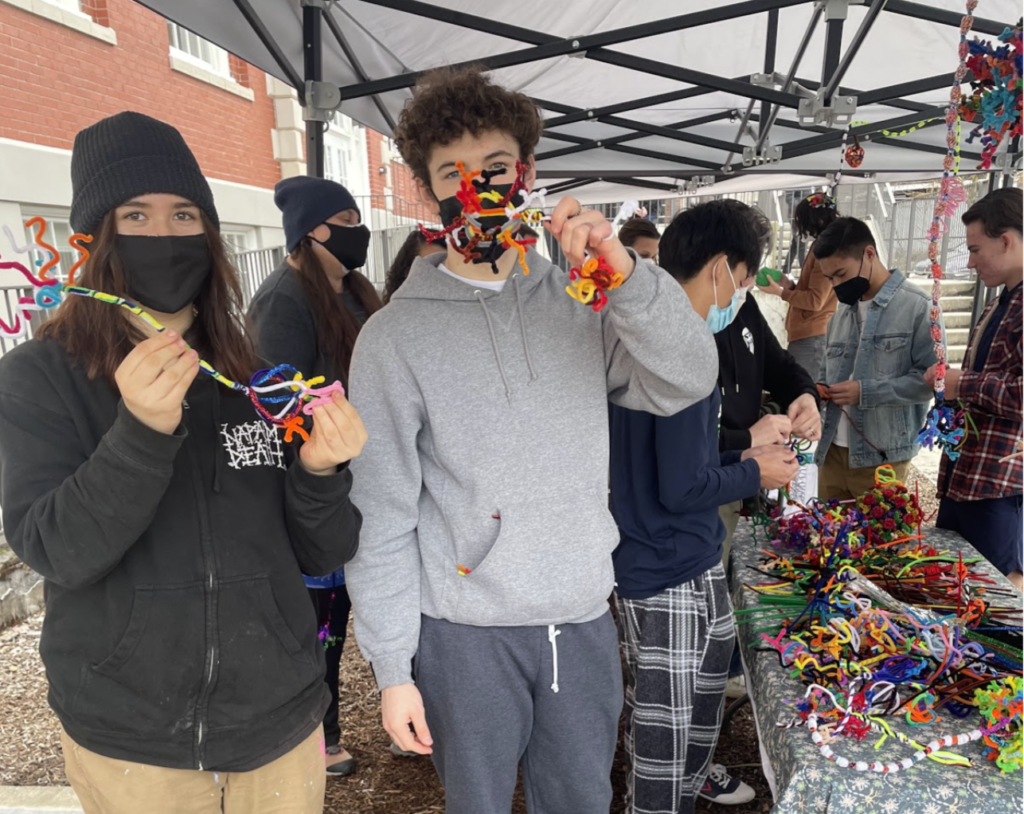
It was so impactful for Northwest Noggin and all of their volunteers to help out.
Students’ minds are firing in all different directions after the visit. I have even more students looking for summer internships to do research. Students who typically quit and don’t usually participate are making slideshows for fun on how things they are working on are affected by neuroscience. Having NW Noggin visiting my class changed my students in many different ways. I’m so grateful and appreciative to have them join our class and believe that we should add them to our district curriculum because one day visiting with them will make a lifetime difference and changes the game of teaching.
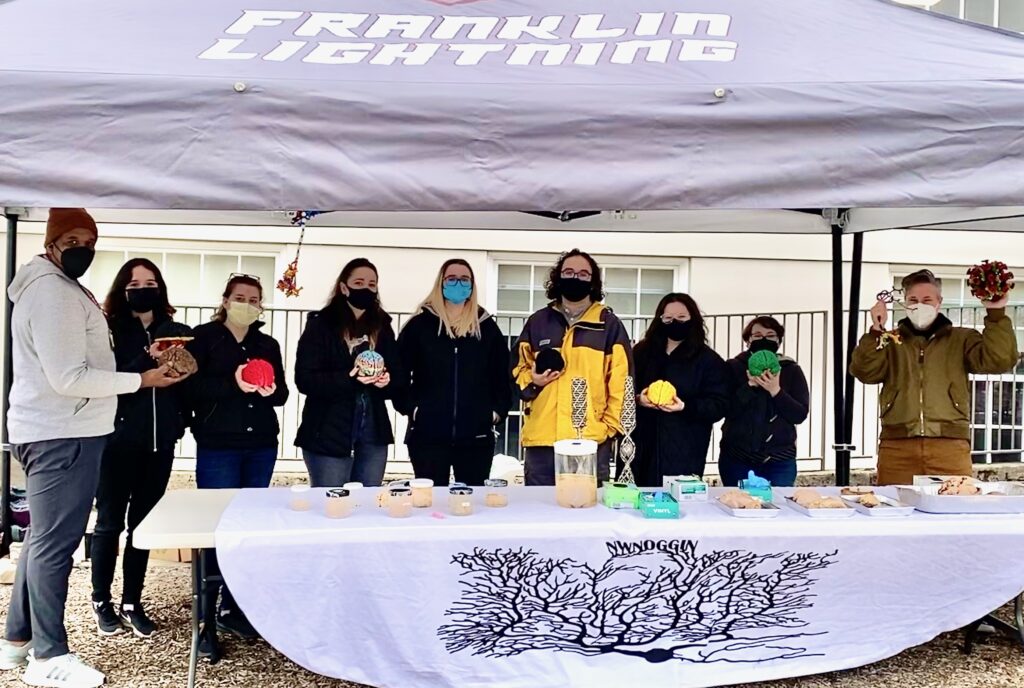
Thanks to artist Kit S. Carlton for her perspective and engagement, Sophia Weber from OHSU for sharing her neuroscience research knowledge, and to Zoie Harpole, Tira Gaston, Melissa DeMoura, Crystal Clark, Alex Heinrich, Tonia Bautista, Kaya Burd, Hannah Shawo, Alisha Steigerwald and Julie Barrette for answering questions (and joining us during finals week!) from Portland State University!


